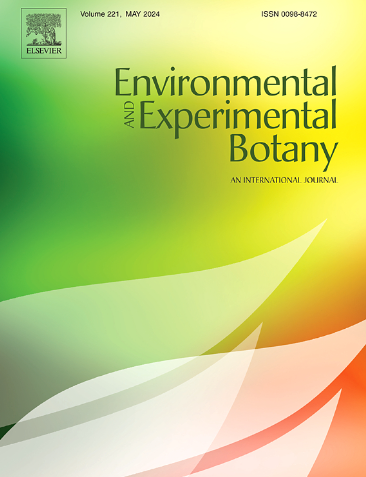Single versus recurrent heat stress: A case study on the impact of a stress at flowering on the sorghum response to a subsequent post-flowering stress
IF 4.7
2区 生物学
Q2 ENVIRONMENTAL SCIENCES
引用次数: 0
Abstract
The increasing intensity and frequency of heat waves due to climate change pose a growing threat to global food security. Two experiments were conducted under controlled conditions using six temperature scenarios to compare the effects of single and recurrent heat stresses on maximum photosystem II quantum efficiency (Fv/Fm), above-ground plant biomass, grain yield and grain yield components in two sorghum genotypes. This study confirmed that the responses of grain number and thousand grain weight are highly dependent on stage development for both single and recurrent heat stresses. Recurrent heat stresses have synergistic effects, leading to around 20 % more yield losses than the cumulative responses to the corresponding single stresses. In contrast, Fv/Fm was less reduced by heat stress if the plants had been subjected to a previous stress. The large reduction in thousand grain weight under recurrent heat stresses may result in a strong remobilization of carbohydrates to sinks other than the main stem panicle. The increased tillering induced by single heat stresses and further amplified under recurrent heat stresses could partly explain this effect. The study highlights the complexity of plant responses to heat stress and the challenges of predicting outcomes under recurrent stress conditions.
单热胁迫与反复热胁迫:开花时胁迫对高粱对随后开花后胁迫反应影响的案例研究
由于气候变化,热浪的强度和频率不断增加,对全球粮食安全构成越来越大的威胁。在6种不同温度条件下,比较单次和反复热胁迫对2种高粱基因型最大光系统量子效率(Fv/Fm)、地上生物量、籽粒产量和籽粒产量组分的影响。本研究证实了单次和反复热胁迫对籽粒数和千粒重的响应高度依赖于籽粒发育。反复热应力具有协同效应,导致产量损失比相应单一应力的累积响应多约20% %。相比之下,如果植物经受过先前的胁迫,则热胁迫对Fv/Fm的影响较小。在反复热胁迫下千粒重的大幅度减少可能导致碳水化合物向除主茎穗以外的其他汇的强烈重新动员。单次热胁迫引起的分蘖增加,在反复热胁迫下进一步放大,可以部分解释这种效应。该研究强调了植物对热胁迫反应的复杂性,以及在反复胁迫条件下预测结果的挑战。
本文章由计算机程序翻译,如有差异,请以英文原文为准。
求助全文
约1分钟内获得全文
求助全文
来源期刊

Environmental and Experimental Botany
环境科学-环境科学
CiteScore
9.30
自引率
5.30%
发文量
342
审稿时长
26 days
期刊介绍:
Environmental and Experimental Botany (EEB) publishes research papers on the physical, chemical, biological, molecular mechanisms and processes involved in the responses of plants to their environment.
In addition to research papers, the journal includes review articles. Submission is in agreement with the Editors-in-Chief.
The Journal also publishes special issues which are built by invited guest editors and are related to the main themes of EEB.
The areas covered by the Journal include:
(1) Responses of plants to heavy metals and pollutants
(2) Plant/water interactions (salinity, drought, flooding)
(3) Responses of plants to radiations ranging from UV-B to infrared
(4) Plant/atmosphere relations (ozone, CO2 , temperature)
(5) Global change impacts on plant ecophysiology
(6) Biotic interactions involving environmental factors.
 求助内容:
求助内容: 应助结果提醒方式:
应助结果提醒方式:


